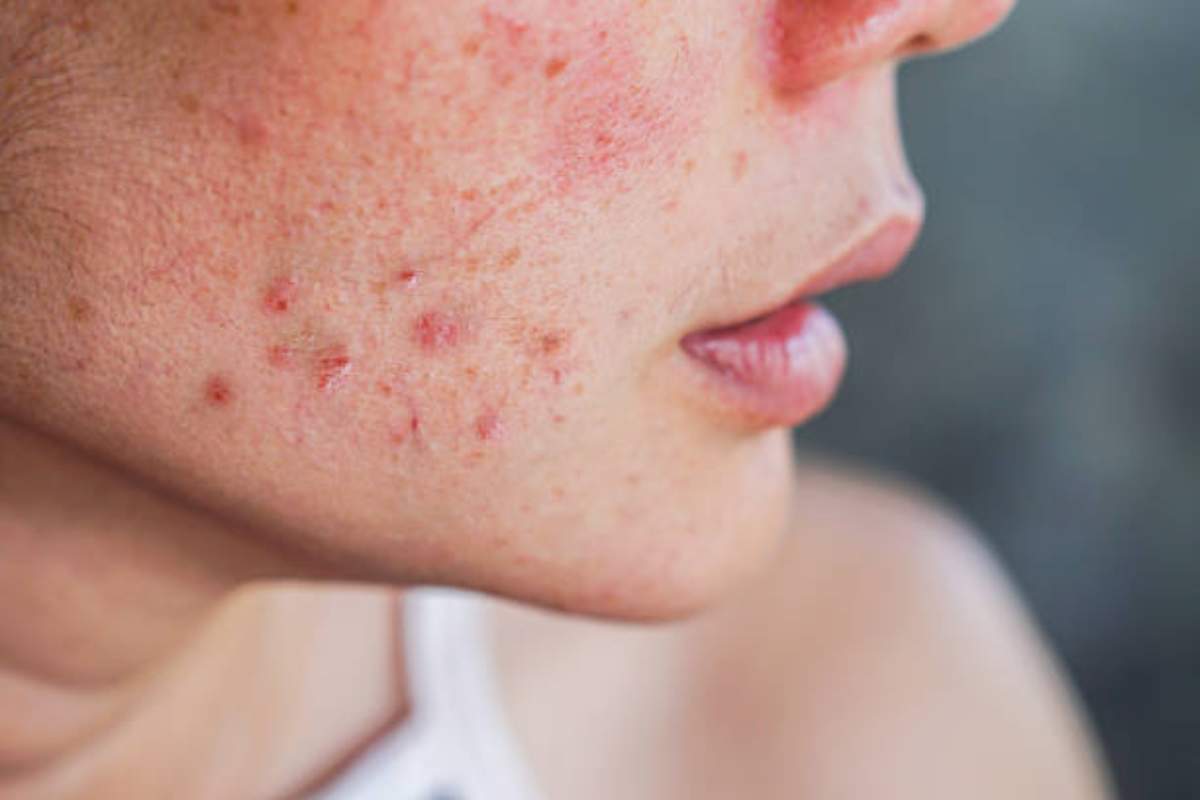Acne is a common skin condition caused by irritated and inflamed skin lesions that vary in severity, ranging from mild cases with a few blemishes to severe forms that involve deep, painful cysts and pimples. It mainly comes about from clogged pores and affects up to 95% of young people and around 5% of older adults. One of the most challenging long-term effects of acne is the scarring that occurs from the harsh or prolonged inflammatory responses that cause trauma to the skin tissue. The skin attempts to recover from the textural change in the dermis layers but can fall short due to the severity of the inflammation or from an inability of the skin to regenerate tissue properly due to a lack of collagen fibres.
Effective management of acne can involve a combination of topical solutions, oral medications, and preventative lifestyle changes such as those aimed at reducing sebum, the oily substance that clog the pores and cause acne in the first place. However, for acne scarring, treatments can range from chemical peels to laser therapy, to dermal fillers and topical medications, to microneedling, depending upon the type and extent of the scarring. Among these, microneedling is considered to be one of the most popular and preferred methods for its efficacy and minimal post-procedure effects.
Acne scars can be particularly stubborn to treat, but with the microneedling treatment especially when done well with an effective professional microneedling serum, the old scar tissue is broken down to make way for the formation of new collagen and elastin, which contribute towards healthy skin. Also known as collagen induction therapy, microneedling involves puncturing the skin with tiny, sterile needles to create controlled micro-injuries that trigger the body’s natural wound-healing processes. The procedure can be performed in clinics by professionals or conducted as an at-home treatment, using derma rollers or automated microneedling pens. It works for acne scars through the breakdown of scar tissue where the needles break up the collagen bundles in the superficial layer of the dermis, and the controlled injuries induce the wound-healing process.
Upon sensing the wounds created from the procedure, the body sends immune cells to the site to fight infection and remove debris, and also releases growth factors and cytokines that help regulate the healing process. Next, the body begins to regenerate new tissue through fibroblasts, which are specialised cells in the dermis that produce new collagen and elastin fibres to fill in the micro-injuries. Over time, the newly formed collagen fibres are reorganised and structured into a stronger, more resilient network, improving skin texture and elasticity.
The visible marks from acne can be identified as various types, including atrophic scars (depressions in the skin), hypertrophic scars (raised scars), and post-inflammatory hyperpigmentation (dark spots left after the acne heals). Atrophic scars are further categorised into ice-pick, boxcar, and rolling scars, each with its own distinct identifiers and treatment challenges, with many individuals experiencing more than one type. Ice-pick scars are deep and narrow indentations, boxcar scars are broad and rectangular, and rolling scars are wave-like depressions on the skin.
Several studies have proven that microneedling helps reduce the visibility of acne scars, such as a clinical evaluation that showed notable improvement in patients with post-acne atrophic scars and skin texture after six sessions of microneedling. A growing rate of satisfaction in the results was also reported after multiple treatments, and it was noted that rolling and boxcar scars responded well, while icepick scars showed moderate improvement. In another test conducted by El-Domyati et al. ten patients with atrophic facial scars underwent six microneedling sessions over three months. Skin biopsies revealed an increase in collagen production, with the patients reporting mild pain and swelling, though it dissipated within 24 hours. Overall, they experienced a 51%-60% improvement in scar appearance, a 40%-50% enhancement in skin texture, and delivered an overwhelmingly positive response from the course.
Microneedling has also been used to successfully address hypertrophic surgical scars by increasing delivery of topical applications to the dermis. In a study by Aust et al, 16 patients reacted positively with the outcome of their skins’ scar appearance after undergoing treatment that combined multiple microneedling sessions with topical vitamin A and C solutions. When stronger serums are applied to the skin, ones have been formulated using bioactive elements like stem cells, the regenerative properties of the combined treatments are multiplied. This is especially true of the PTT-6® ingredient, a powerhouse mix of exosomes, growth factors, and proteins with a potency heavy enough to raise collagen and elastin production to a much higher level. Tissue renewal and repair occur more comprehensively and visible scars are reduced as skin texture becomes smoother and firmer as the skin cells are given a new lease on life.
Given the complexity and persistence of acne, consulting a medical professional for tailored skincare regimens is essential, as this ensures an inclusive care that addresses the specific needs of each individual in order to promote healthier, clearer skin. The advantages of cosmetic treatment procedures like microneedling alone may present as a valuable solution to address and reduce acne scarring, but modern stem cell skincare makes for a highly compatible supplement that can give way to even more positive outcomes. And despite the multiple sessions that are often required to achieve the best results, the overall patient satisfaction and clinical outcomes make microneedling a worthwhile consideration for those seeking to minimise acne scars.

